Knowledge and awareness of glaucoma in Mexican patients with and without glaucoma diagnosis in an Ophthalmology Referral Center
INTRODUCTION
Glaucoma is the leading cause of irreversible blindness in the world. More than 70 million people worldwide have glaucoma, and approximately 10% will develop blindness.Glaucoma is a silent disease that can remain asymptomatic in early stages until it progresses to a severe and irreversible condition, where it significantly reduces the patient’s visual field, vision and quality of life
.
Due to the asymptomatic nature of the early stages of glaucoma, the number of people affected is likely to be much greater than the number of people who know they have it,in fact, population surveys suggest that only 10% to 50% of people with glaucoma know their diagnosis
.Vast evidence indicates that a late diagnosis of glaucoma is an important risk factor for blindness, and that blindness from glaucoma is also associated with poor awareness and knowledge of the disease
. This makes patient education and awareness projects an essential part of the global fight against blindness. Educating the population encourages ophthalmological check-ups, directed screening, and active participation in follow-ups and treatments, thus, improving adherence and reducing disease progression
.
In previously published studies on glaucoma knowledge,it is estimated that 29%
to 59%
of the population have good knowledge of the disease. Among the causes that can contribute to the lack of knowledge in patients with glaucoma are a poor doctor-patient relationship, patient’s lack of interest or shyness to ask, brief medical consultations that do not leave time to explain the disease in detail, and use of complex language during the explanation
. A poor level of knowledge has been found to be associated with low level of education
,a short-term diagnosis, and advanced age. On the other hand, the factors that were associated with a higher score in glaucoma knowledge were having a family member or friend with the disease and being treated in the private healthcare sector
.
Regarding glaucoma awareness, previous studies have shown that from 35% to 79% of ophthalmology patients are aware of the existence of glaucoma. It has also been reported that developed countries have better glaucoma awareness compared to developing countries
. Having a family member diagnosed with glaucoma is also associated with greater awareness
, as this has been shown to encourage education about the disease. However, a high level of awareness about glaucoma does not imply that patients have adequate knowledge, in fact it has been shown that most people have a poor understanding of glaucoma despite being aware of the disease
.
The purpose of this study is to assess and compare knowledge and awareness of glaucoma in a population attending an Ophthalmology Referral Center in Mexico City.
SUBJECTS AND METHODS
The Institutional Ethics and Research Committee of Asociaciόn Para Evitar la Ceguera, Mexico City,approved the protocol, and the methodology adhered to the tenets of the Declaration of Helsinki. Written informed consent was obtained from all participants before enrollment.
近年来,国家开始着手对公交车行业和地铁的建设,这些更廉价安全的出行方式对出租车的冲击不言而喻。并且在人民收入水平的提高以及汽车价格的不断下跌的现状下,越来越多的人购置了属于自己的汽车,这使得潜在的客户越来越少。
值得庆幸的是,楼上和左达打赌的徐艺,这一把赢了,左达出的是石头,徐艺出的是布。他不禁往上一蹦:“哈哈,你输了!”
This cross-sectional study was conducted at the Asociaciόn Para Evitar la Ceguera in Mexico City, Mexico. Following a review of the literature, we designed a questionnaire containing a set of brief, structured questions in Spanish with easily understandable options to gather information on participants’knowledge and awareness of glaucoma adapted to our population. The questionnaire was divided into 4 parts:sociodemographic data, glaucoma awareness, glaucoma knowledge, and the patient’s personal preferences to receive education. Questions on sociodemographic data included participant’s age, sex, religion, marital status, educational degree, occupation and monthly income. Glaucoma awareness questions and general ophthalmological knowledge explore whether the participant has glaucoma, has previously heard about glaucoma, has family members or friends with a diagnosis of glaucoma, frequently attends ophthalmic evaluations, and their medical or surgical treatment for glaucoma, if applicable to the case. Glaucoma knowledge questions aim to determine basic knowledge about the affected anatomical site, types of glaucoma, signs and symptoms, risk factors, visual field alteration and patterns, progression and treatment. We also included questions about participants’preferences for obtaining educational information about glaucoma.The questionnaire was developed by a group of experts following the rules of the Delphi panel, then it was validated in a pilot group and Cronbach’s alpha was determined to assess internal consistency, obtaining a Cronbach’s alpha of 0.885. Glaucoma knowledge was classified into three groups according to the score obtained in the questionnaire (total score: 19) as: good (≥15 points), moderate (9 to 14 points), or poor (≤8 points).
The sample size was calculated by sample distribution of proportions, it was determined separately for awareness and knowledge. For the final calculation, glaucoma awareness of the participants was taken as the main outcome measure. The
required 440 patients, considering a 15% loss of participant due to incomplete questionnaires the minimum of patients required for statistical significance is 374 participants.
We analyzed factors related to a higher score and better knowledge and found a positive correlation between the level of knowledge and having frequent eye exams, similar to the results in the studies by Alemu
and Yenegeta
.We believe that by having more eye evaluations, the patient is more exposed to ophthalmological patient education simply by being in a hospital setting. Additionally, there was a positive correlation between level of knowledge and a higher level of education, as well as having a family member with glaucoma.In previous studies, the level of education and having a relative with glaucoma have been found to be associated with better glaucoma knowledge
. Moreover, Sood
observed that the most educated people were less likely to share their condition with their spouse or family. The authors believe that sharing this information with their immediate family can help remind and monitor usage of medication and ensure timely visits to the doctor for glaucoma monitoring,as well as educating family members on having their eyes checked.
A descriptive statistical analysis was carried out to determine knowledge and to compare it between groups (patients with glaucoma, without glaucoma and companions). Sociodemographic data were collected to assess the correlation between the level of knowledge and awareness using the Chisquare test and Logistic regression models, estimating the odd ratios (OR), 95% confidence intervals (CI), and
<0.05 were considered statistically significant.
RESULTS
河湖健康评估 河湖健康评估是指对河湖系统物理完整性(水文完整性和物理结构完整性)、化学完整性、生物完整性和服务功能完整性及其相互协调性的评价。
潘美丽扭着短粗的脖子,剜了丁主任一眼:你是给我老爸添麻烦。丁主任的脸更红了,甲洛洛赶忙转移视线:都是我的责任,不关丁主任的事,但我一定会查清楚,请大家放心。
Classifying the 394 respondents by group, 134 (34%) were patients with a diagnosis of glaucoma, 152 (38.6%) were ophthalmic patients without glaucoma and the remaining 108(27.4%) participants were companions of patients.
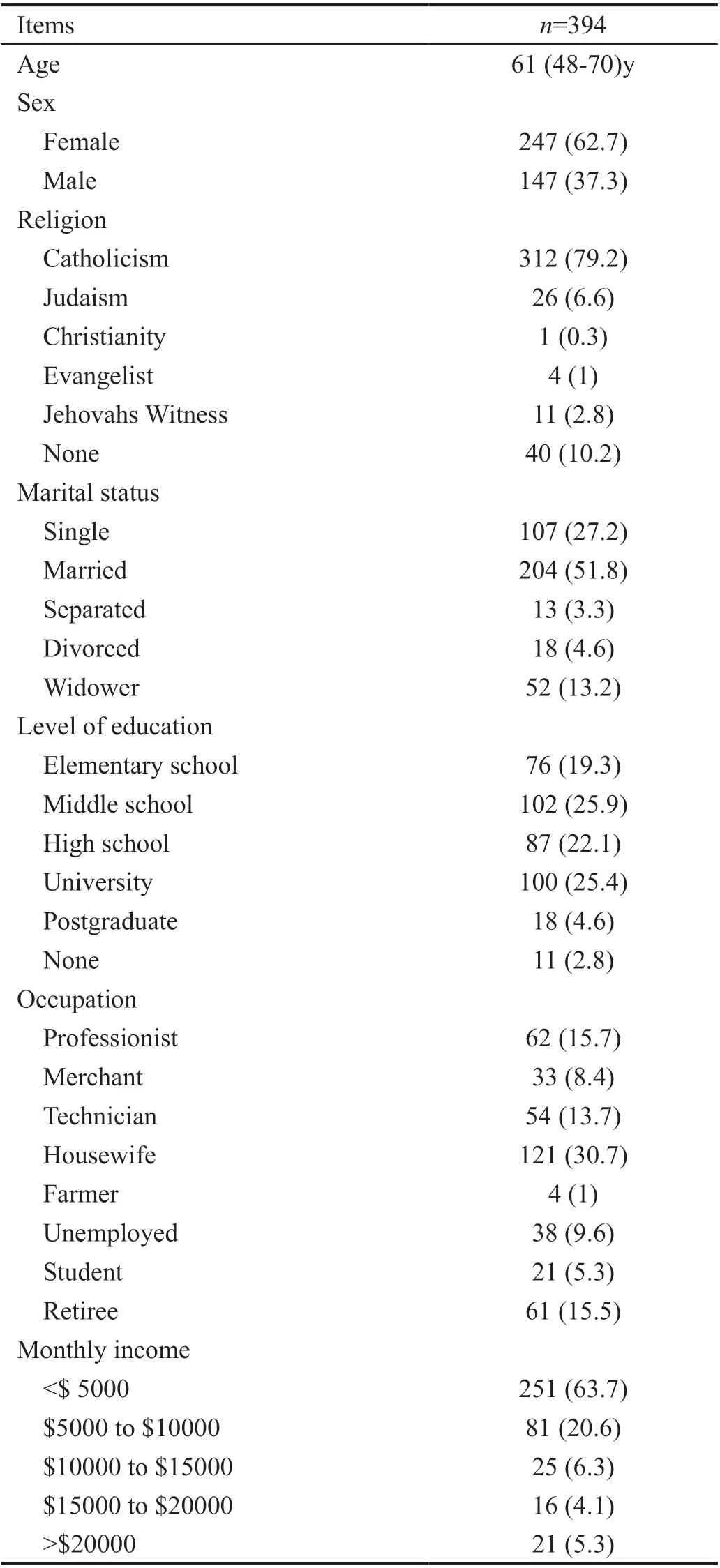
某油田注水流程:从海水提升泵过来的海水先通过粗过滤器,使95%直径大于或等于80 μm的悬浮颗粒被祛除。PAP海水提升泵的海水经过PAP粗过滤器过滤后与A平台粗过滤器水出口汇合。
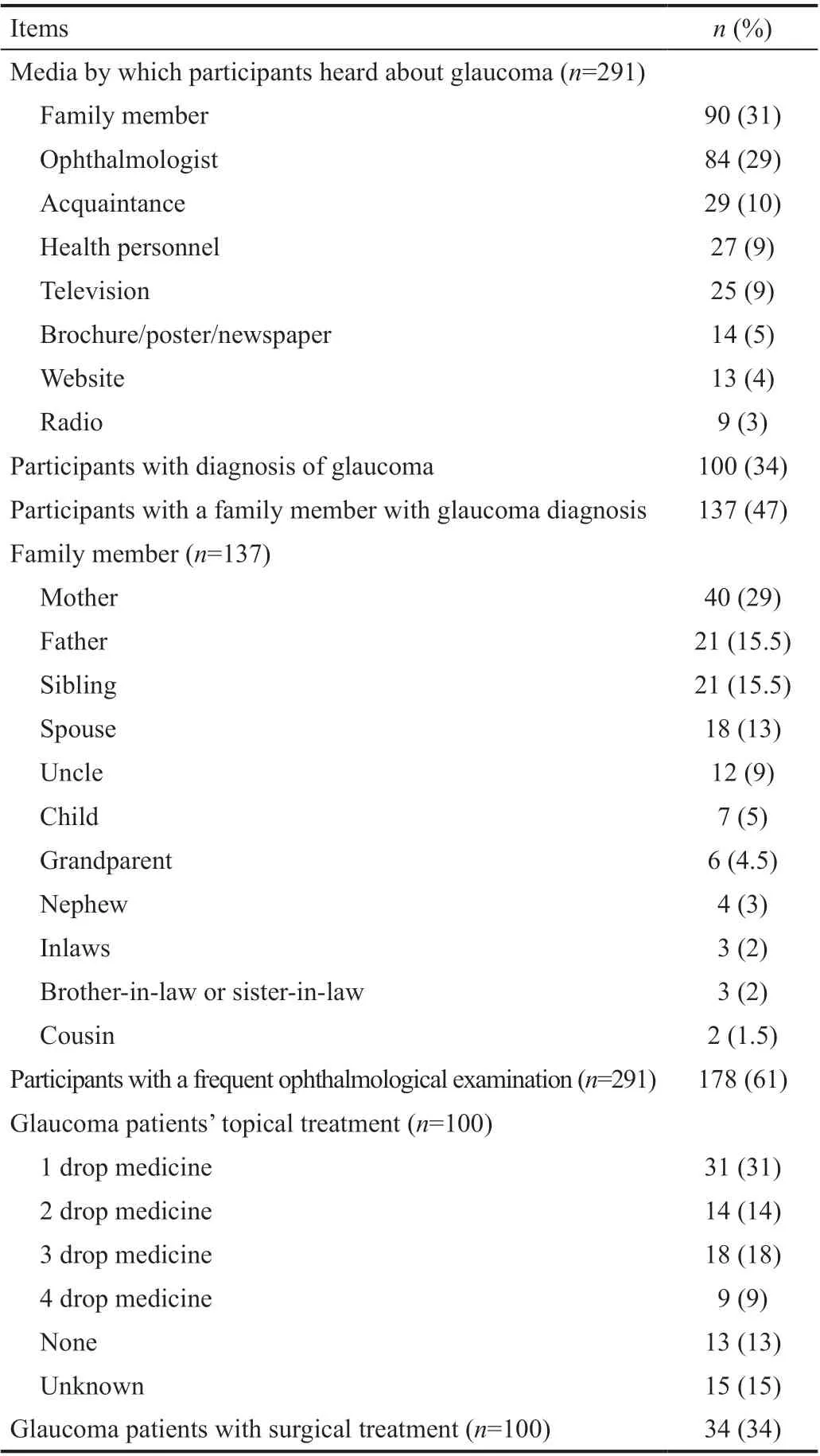
Knowledge was classified into three groups according to the score obtained in the questionnaire(total score 19) as: good (≥15 points), moderate (9 to 14 points)and poor (≤8 points). Most of the respondents (184, 46.7%)had moderate knowledge, 149 (37.8%) had poor knowledge and only 61 (15.5%) good knowledge. The comparison of knowledge between study groups is shown in Figure 1.We found that most ophthalmic patients without glaucoma had poor knowledge (99), most patients with glaucoma had moderate knowledge (79), and most patient companions had good knowledge (33). Patient companions were the group with overall highest scores.
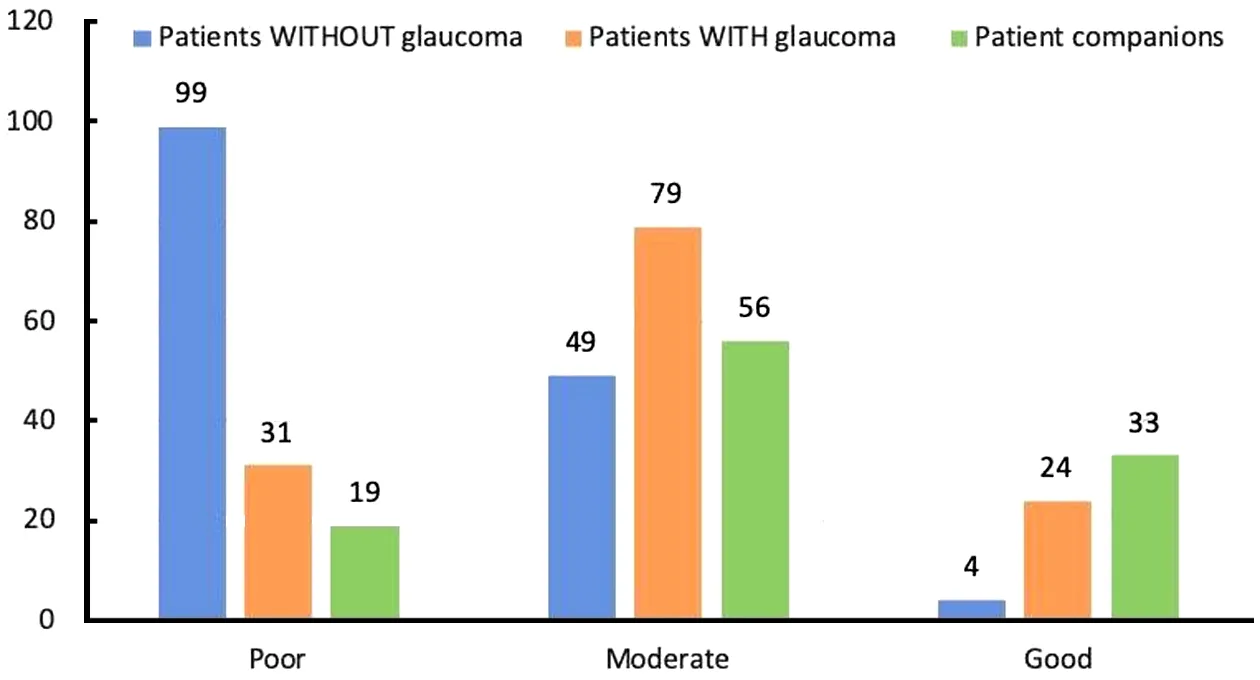
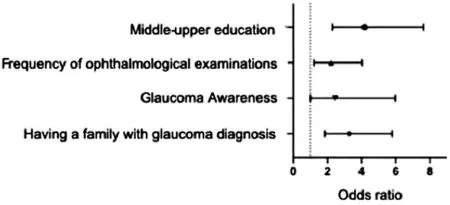
Regarding the specific knowledge of glaucoma (Table 3), most of the respondents (251, 63.7%) did not know the anatomical site of the glaucoma damage, 188 (47.7%) did not know if glaucoma was associated with high intraocular pressure,33.8% (133) could recognize the different treatments available,and 149 (37.9%) knew that the goal of treatment is to delay the progression of glaucoma. The majority of the participants had the notion that people could have glaucoma and not know it (78%, 306), that glaucoma affects the visual field (79%,312), even when they did not know the pattern of visual loss and glaucoma progresses over time (72%, 282) and causes blindness (80%, 316).
This cross-sectional study was conducted to report on awareness and knowledge of glaucoma in a population attending an Ophthalmology Referral Center in Mexico City,Mexico, using a multiple-choice questionnaire validated for our population. Our results show the general proportion of awareness was 73.9%, but despite this high percentage of awareness, scores reflecting good knowledge among respondents was only 15.5% (similar to the Uche
study). This could bring important public implications when we consider the visual impairment that glaucoma could cause.We defined “awareness” as having heard about the term glaucoma, considering this, the proportion of awareness about glaucoma in a Mexican population in our study is higher(73.9%) than previously reported by Paczka
in a survey conducted in an ocular disease detection campaign, where they found that 54% of their studied population had heard the term glaucoma. The difference between glaucoma awareness in these studies may be due to several factors, but we consider it is mainly because our study population was attending an Ophthalmology Referral Center, where people could have access to more information on ocular diseases. Also, our study was conducted 15y after the Paczka
’s
study,and nowadays patients have easier access to information and patient education.
The preference of the majority of the participants for receiving information about glaucoma was an oral explanation (31%) followed by brochures(23%) and educational videos (22%), the rest is shown in Table 4.Regarding who should provide information, 74% of the participants preferred that they be an ophthalmologist. With respect to the topics of interest, most of the participants wanted more general information about the diagnosis and clinical evolution (313, 79%), types of glaucoma and risk factors (295,75%), surgical treatment options (273, 69%) and showed less interest in information on the treatment’s adverse effects (202,51%).
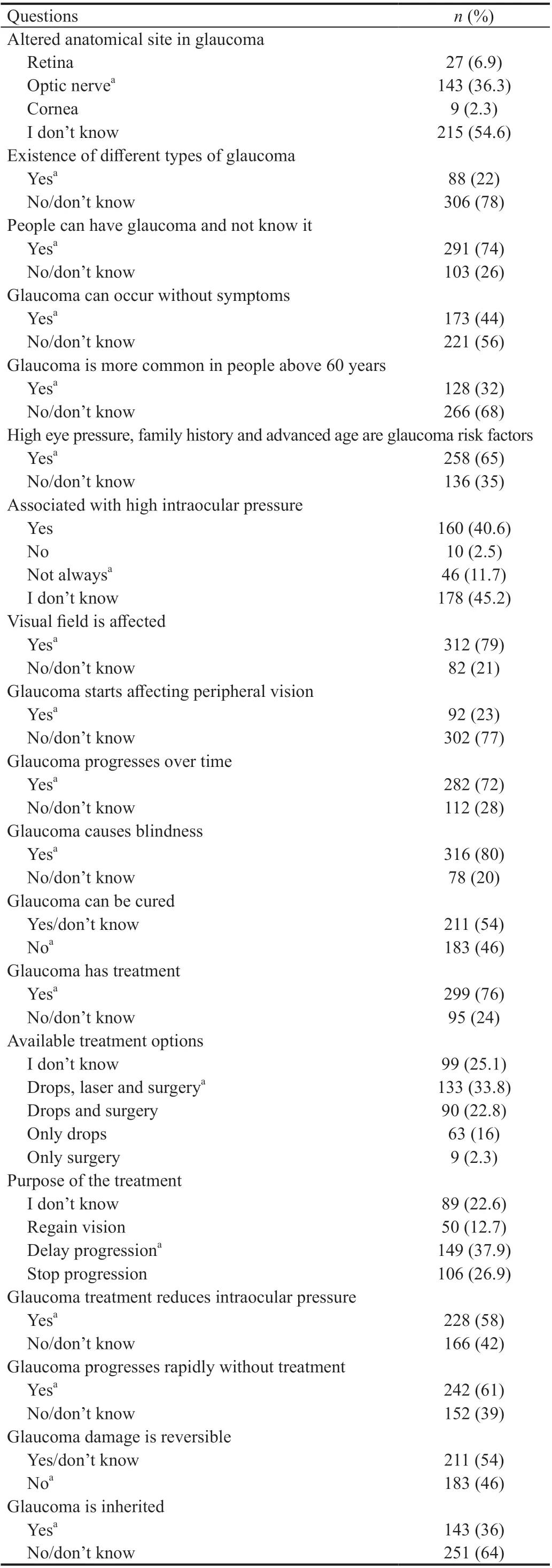

DISCUSSION
Better scores regarding knowledge were associated with frequent ophthalmological examinations (OR 2.24, 95%CI 1.33-3.77;
=0.02), higher level of education (OR 4.17,95%CI 2.28-7.64;
=0.00), and having a family member with glaucoma (OR 3.28, 95%CI: 1.85-5.78;
=0.00; Figure 2).
Published studies have shown that in general, between 25%and 79% of patients are aware of the existence of glaucoma
.Developing countries have low levels of awareness, as observed in studies carried out in Southwestern Ethiopia where the current level of glaucoma awareness was reported to be only 2.4%
and in Northwest Ethiopia where the proportion of awareness was 35.1%
, while studies conducted in developed countries indicate higher levels of awareness as reported in an American study in Massachusetts
, with a proportion of awareness around 72% or in Melbourne,Australia
where it was 79%.
Three hundred and ninety-four adults participated, the male to female ratio was 1:1.7 with a median age of 61y (interquartile range of 48 to 70). The most frequent educational levels were university (100, 25.4%), high school (87, 22.1%) and middle school (102, 25.9%). Regarding occupation, the group that represented the largest number of participants was housewives(121, 30.7%), followed by professionals (62, 15.7%) and retirees (61, 15.5%). Of the 394 participants, 63.7% (251)belonged to a low socioeconomic stratum according to monthly income. The complete socio demographic data is shown in Table 1.
在新时代背景下,企业之间的竞争说到底即为人才之间的竞争,员工作为支撑房地产开发企业稳步发展的重要人力资源,其重要性自不必多言。通过科学系统化的绩效考核管理,将确保房地产开发企业在行业中永立于不败之地。基于此,如果想要将绩效考核管理的积极作用淋漓尽致的发挥出来,就需要尽快构建出以员工为本的绩效考核指标体系。
One of the most striking results of our study is that only 34%of the patients with glaucoma were aware of the disease,this makes it more important to think about educational interventions that increase awareness of the disease due to the visual disability that it implies. According to the source of awareness, the most common source was from close acquaintance with relatives, family members, and friends of glaucoma patients, similar to what was found by Maharana
.
除了施工现场的安全检查之外,施工技术的安全检查很容易被忽视,导致很多建筑施工企业未能及时发现施工技术的缺陷,不仅不利于整个工程的建设质量,而且还给施工项目带来巨大的安全隐患,不利于整个项目的顺利开展。
8.5m标高海岸步道受风浪侵蚀的概率较小,一般可采用混凝土的护坡结构,但混凝土结构表面美观性差,为增强该段海岸步道的美观性,采用石板饰面。
这位来自奥地利萨尔茨堡的女赛车手是全世界速度最快的女性之一。2018年,她以车手身份出战了X-Bow杯对抗赛、纽博格林24小时耐力赛等赛事。顺便提一下,她的日常用车不过是一辆毫不起眼的BMW。
Regarding glaucoma awareness,291 (73.9%) participants had heard of the term “glaucoma,”the prevalence of awareness by study group did not show differences, with 100 (34%) in the group of patients with diagnosis of glaucoma, 92 (32%) in the group of ophthalmic patients without glaucoma and 99 (34%) in patients’companions group. Ninety (31%) of those surveyed had heard the term “glaucoma” from a family member, 84 (29%) from an ophthalmologist, 29 (10%) from an acquaintance, and the remaining 88 (30%) from some other medium such as other health care personnel and the media (Table 2). Additionally,47% of the participants (137) who were aware, had a family member with glaucoma disease, and most of them were firstdegree relatives. Of the patients who were aware and had a diagnosis of glaucoma (100, 34%), the majority (around 85%),knew their treatment and the drops that they used, 15% did not know their treatment. No association was found between awareness and age, level of education, occupation, or monthly income.
As opposed to what we found with respect to awareness of glaucoma, the level of good knowledge in our participants was lower (15.5%) than in the Paczka
study, which also included Mexican population (31%). In other international studies the range varies from 6.3% in the study by Ogbonnaya
to 59% in the Pfeiffer
study. On the other hand,the finding of the present study is consistent with reports from Yenegeta
supporting that there is less knowledge of glaucoma in developing countries, that could relate to the level of education and acess to information of the general population.
It is important to mention that the tools used to determine knowledge also differ between studies, since we used a questionnaire with 19 knowledge question and some studies only required a global definition that covers some aspects of glaucoma such as that it occurs with high intraocular pressure, that it affects the elderly and the visual field or that it causes visual loss. It can be observed that when the knowledge measure becomes more specific through a series of questionnaires and not only by asking for a definition that includes some aspects of glaucoma, the percentage of “good knowledge” decreases. In addition to the number and the type of questions asked, in our study the scoring criteria to consider“good knowledge” were stricter than in other publications (we required 80% of correct answers).
Most of our participants had a moderate knowledge (46.7%),and the overall highest scores were observed among the companions of patients, followed by patients with a diagnosis of glaucoma (30% and 18%, respectively). This contrasts with a previous study by Celebi
, where the patients with a glaucoma diagnosis had the highest knowledge scores,although in this study knowledge was not assessed as good,moderate, or poor, as in ours. This could be due to different factors, but in our study group the level of education was higher in the companions of patients than in the patients with a glaucoma diagnosis. Also, a high percentage of companions were the primary caregivers, which could impact their interest in obtaining information on ocular diseases, since they observe the consequences that it has in their family members.
The questionnaire was applied to patients over 18 years of age attending an Ophthalmology Referral Center and to their companions. Incomplete questionnaires were excluded. The data was collected in a spreadsheet (Excel, 2018, Microsoft,Redmond, WA, USA) and analyzed with SPSS, version 25,Chicago, IL, USA.
Our results showed that the participants preferred to obtain patient education about glaucoma through an oral explanation,followed by brochures and videos. Also, most prefer that the information be provided by an ophthalmologist. This finding is similar to that obtained by Odberg
and by Hoevenaars
.
Many of the results of these studies depend on the demographic characteristics of the population such as the level of education,urban or rural area, and age, however, in our study we did not find a positive correlation between awareness and age, level of education, occupation, or monthly income
. Likewise, we consider that one of the most important factors that determines the results relies on the definition of “glaucoma awareness”.In some previous studies and even in ours, participants were considered aware of glaucoma if they answered positively(“yes”) to the simple question “Have you heard the term glaucoma?” in which the percentage of awareness was higher,while in studies where the definition was stricter or more complex, requiring participants to give a description about the disease (glaucoma) in the answer, showed lower percentages of awareness.
Our findings reflect that we must focus on carrying out educational strategies to get information to the population.Knowing that the participants prefer an oral explanation,brochures and videos, exhibits could be held and/or illustrative educational videos could be shown in the waiting rooms to inform patients about glaucoma while they wait for their appointment, and also brochures should be available on various shelves of the hospital so that patients can be informed. These educational materials save time at the moment of consultation,where only remainings doubts or concerns can be answered more broadly.
为兼顾大型工业立体仓库的存储效率及其结构稳定性,需根据存储效率优先原则、结构稳定性原则建立适用于两端式同轨双车运行模式的货位分配模型。
Also, according to the results obtained in the study by Daly and Agarwal
, providing patients with a logbook that includes basic information on glaucoma, as well as intraocular pressure records and changes in treatment between medical visits,increases the knowledge and understanding of the patient about their disease and could help in adherence to treatment
.On the other hand, we must consider that mobile media such as social networks, blogs or chats, among other resources,can currently be used to transmit educational information about glaucoma and increase awareness and knowledge in the population
.
There are limitations to this study that must be considered when interpreting the results, one of these limitations is the population studied, because it is not a representative sample of the general Mexican population as it was carried out in an Ophthalmological Referral Center, where patients may be more aware of the existence of eye diseases such as glaucoma.Another limitation we recognize is the lax definition for measuring awareness as it was assessed with only “yes or no”questions.
It would be worth carrying out a study to evaluate the association between knowledge, quality of life and adherence to treatment in this population, since in previous studies carried out by Chen
it was found that patients with good knowledge of glaucoma have a better quality of life,Waterman
in their research observed that educational interventions and the patient’s knowledge improved adherence to treatment, and also Skalicky
found that a patientcentered glaucoma-related education and support services may improve knowledge and can reduce anxiety for newly diagnosed glaucoma patients.
In conclusion, this study provides data on the awareness and knowledge of glaucoma in patients with and without a diagnosis of glaucoma and in their companions in an Ophthalmology Referral Center. Our results showed that although the level of awareness is high, the level of glaucoma knowledge is low.
This questionnaire allowed us to detect areas of educational deficit and reinforce our strategy for patients and general population regarding glaucoma in order to increase checkups, and to help promote adherence to treatment and clinical follow-up in those who already have a diagnosis of glaucoma.
The abstract was published on the 9
WORLD GLAUCOMA E-CONGRESS June 30-July 3, 2021.
None;
None;
None;
None;
None.
1 Weinreb RN, Aung T, Medeiros FA. The pathophysiology and treatment of glaucoma: a review.
2014;311(18):1901-1911.
2 Sathyamangalam RV, Paul PG, George R, Baskaran M, Hemamalini A, Madan RV, Augustian J, Prema R, Lingam V. Determinants of glaucoma awareness and knowledge in urban Chennai.
2009;57(5):355-360.
3 Javitt JC. Preventing blindness in Americans: the need for eye health education.
1995;40(1):41-44.
4 Attebo K, Mitchell P, Cumming R, Smith W. Knowledge and beliefs about common eye diseases.
1997;25(4):283-287.
5 Pfeiffer N, Krieglstein GK, Wellek S. Knowledge about glaucoma in the unselected population: a German survey.
2002;11(5):458-463.
6 Costa VP, Spaeth GL, Smith M, Uddoh C, Vasconcellos JPC, Kara-José N. Patient education in glaucoma: what do patients know about glaucoma?
2006;69(6):923-927.
7 Hoevenaars JGMM, Schouten JSAG, van den Borne B, Beckers HJM,Webers CAB. Knowledge base and preferred methods of obtaining knowledge of glaucoma patients.
2005;15(1):32-40.
8 Alammar AA, Alabdulkareem AM, Abu-Amara AB, Kalantan H.Assessment of the levels of knowledge regarding cataract and glaucoma in Saudi Arabia and measurement of the ability to differentiate between the two.
2021;13(11):e19849.
9 Danesh-Meyer HV, Deva NC, Slight C, Tan YW, Tarr K, Carroll SC,Gamble G. What do people with glaucoma know about their condition?A comparative cross-sectional incidence and prevalence survey.
2008;36(1):13-18.
10 Tenkir A, Solomon B, Deribew A. Glaucoma awareness among people attending ophthalmic outreach services in Southwestern Ethiopia.
2010;10:17.
11 Gasch AT, Wang P, Pasquale LR. Determinants of glaucoma awareness in a general eye clinic.
2000;107(2):303-308.
12 Mansouri K, Orgül S, Meier-Gibbons F, Mermoud A. Awareness about glaucoma and related eye health attitudes in Switzerland: a survey of the general public.
2006;220(2):101-108.
13 Paczka JA, Ochoa-Tabares JC, Giorgi-Sandoval LA,
. Knowledge and perceptions of glaucoma among adults living in an urban area.
2006;142(4):303-308.
14 Celebi ARC. Knowledge and awareness of glaucoma in subjects with glaucoma and their normal first-degree relatives.
2018;7(1):40-47.
15 Uche NJ, Udeh NN, Chuka-Okosa CM, Kizor-Akaraiwe NN, Uche EO. Glaucoma care and follow-up in sub-Saharan Africa: is there a need for modification of counselling practices to improve awareness,knowledge and treatment acceptance profiles? A prospective crosssectional study.
2020;40(6):1539-1546.
16 Al-Naggar RA, Alshaikhli H, Al-Rashidi RR, Saleh B. Glaucoma among the Malaysian community.
2020;2020:4859496.
17 Alemu DS, Gudeta AD, Gebreselassie KL. Awareness and knowledge of glaucoma and associated factors among adults: a cross sectional study in Gondar Town, Northwest Ethiopia.
2017;17(1):154.
18 Livingston PM, McCarty CA, Taylor HR. Knowledge, attitudes, and self care practices associated with age related eye disease in Australia.
1998;82(7):780-785.
19 Maharana PK, Rai VG, Pattebahadur R, Singhi S, Chauhan AK.Awareness and knowledge of glaucoma in central India: a hospitalbased study.
(
) 2017;6(3):243-249.
20 Kizor-Akaraiwe NN, Monye HI, Okeke S. Awareness and knowledge about glaucoma and proportion of people with glaucoma in an urban outreach programme in Southeast Nigeria.
2017;1(1):e000018.
21 Sood D, Sood S, Sood I, Kumar D, Sood R, Sood NN. Glaucoma awareness amongst glaucoma patients seeking a second opinion.
2018;38(4):1441-1449.
22 De-Gaulle VF, Dako-Gyeke P. Glaucoma awareness, knowledge,perception of risk and eye screening behaviour among residents of Abokobi, Ghana.
2016;16(1):204.
23 Ogbonnaya CE, Ogbonnaya LU, Okoye O, Kizor-Akaraiwe N.Glaucoma awareness and knowledge, and attitude to screening, in a rural community in Ebonyi State, Nigeria.
2016;6(2):119-127.24 Yenegeta Z, Tsega A, Addis Y, Admassu F. Knowledge of glaucoma and associated factors among adults in Gish Abay town, Northwest Ethiopia.
2020;20(1):8.
25 Tatham AJ, Ali AM, Hillier N. Knowledge of glaucoma among patients attending virtual and face-to-face glaucoma clinics.
2020;30(4):325-331.
26 Odberg T, Jakobsen JE, Hultgren SJ, Halseide R. The impact of glaucoma on the quality of life of patients in Norway. I. Results from a self-administered questionnaire.
2001;79(2):116-120.
27 Daly R, Agarwal PK. Is patient knowledge of glaucoma improved by using a glaucoma logbook?
2018;27(5):470-475.
28 Killeen OJ, Pillai MR, Udayakumar B, Shroff S, Vimalanathan M, Cho J, Newman-Casey PA. Understanding barriers to glaucoma treatment adherence among participants in South India.
2020;27(3):200-208.
29 Li JL, Huang WM, Gao JY, Li DD, Xu LY, Huang JJ. Impact of mobile-based health education on the awareness and knowledge of glaucoma in Chinese patients.
2019;25(6):455-461.
30 Chen X, Zhong YL, Chen Q, Tao YJ, Yang WY, Niu ZQ, Zhong H, Cun Q. Knowledge of glaucoma and associated factors among primary glaucoma patients in Kunming, China.
2022;22(1):95.
31 Waterman H, Evans JR, Gray TA, Henson D, Harper R. Interventions for improving adherence to ocular hypotensive therapy.
2013:4:CD006132.
32 Skalicky SE, D’Mellow G, House P, Fenwick E, the Glaucoma Australia Educational Impact Study Contributors. Glaucoma Australia educational impact study: a randomized short-term clinical trial evaluating the association between glaucoma education and patient knowledge, anxiety and treatment satisfaction.
2018;46(3):222-231.
 International Journal of Ophthalmology2022年6期
International Journal of Ophthalmology2022年6期
- International Journal of Ophthalmology的其它文章
- Intraocular lens removal or not during vitrectomy for acute infectious endophthalmitis after cataract surgery
- Vitreous function and intervention of it with vitrectomy and other modalities
- Short-term outcomes of mitomycin C-augmented excisional bleb revision with capsulectomy for failed Ahmed glaucoma valve
- Evaluation of nintedanib as a new postoperative antiscarring agent in experimental extraocular muscle surgery
- Multimodal imaging of experimental choroidal neovascularization
- A novel Nance-Horan syndrome mutation identified by next-generation sequencing in a Chinese family
